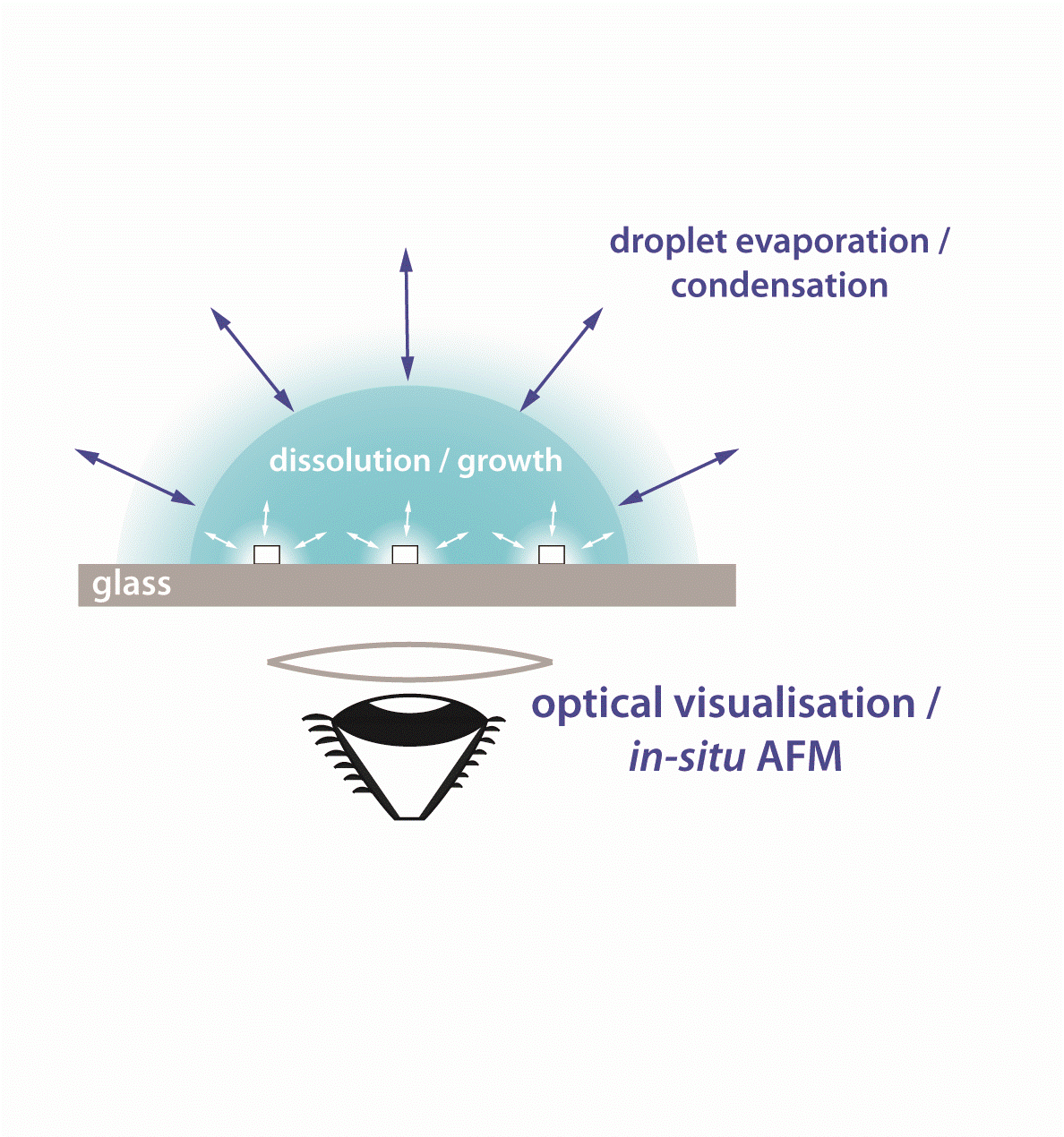PhD project available
Quantitative Visualization of Dissolution and Crystallization of Agrochemical Active Ingredients (AIs)
Project Description
Agrochemical formulations typically comprise an active ingredient (AI), which is a particular organic molecule, together with a large concentration of surfactant in water to assist with uptake of the AI to a target (e.g. leaf). It is increasingly recognized that dissolution/crystallization of organic materials is of major importance in determining the action and efficacy of AIs and that a better understanding of these processes would lead to a greatly improved delivery process, with – for example - the possibility of using less AI in the future, which would be hugely beneficial. The goal of this project is to use state of the art measurements techniques and concepts developed at Warwick to investigate dissolution/crystallization processes in real time. Experimental data will be used to paramaterise finite element method models to predict intrinsic dissolution/crystallization rates. There will be considerable scope to liaise with colleagues at Syngenta to develop experiments and build models on complex multi-crystal systems, including effects such as evaporation, precipitation, and the impact of the substrate chemistry.
The Warwick Electrochemistry and Interfaces Group (WEIG) has outstanding facilities and reputation for the development and use of innovative (imaginative) techniques. The project is part of the CDT in Molecular Analytical Science and will also offer training in the first 2 years of the PhD (leading to a certificate). It will further be associated with the EPSRC programme grant “Crystallization in the Real World”, which brings together 8 leading experimental and theory groups in the UK (Leeds, Warwick, UCL and Sheffield), and provides an excellent environment for research in this area.
Funding notes
The project is fully funded for 3.5 years with all fees paid and a yearly stipend of approx. £16,000 for 2019/20. The start date is 1 Sep 2019 or as soon after as possible. The successful candidate will be part of the MAS CDT.
Apply Now! Applications are welcomed until the 30th August 2019 - please send a CV and covering letter to mas@warwick.ac.uk
Background to project
Agrochemical formulations typically comprise an active ingredient (AI), which is a particular organic molecule, together with a large concentration of surfactant in water to assist with uptake of the AI to a target (e.g. leaf). It is increasingly recognized that dissolution/crystallization of organic materials is of major importance in determining the action and efficacy of AIs and that a better understanding of these processes would lead to a greatly improved delivery process, with – for example - the possibility of using less AI in the future, which would be hugely beneficial. The goal of this project is to use state of the art measurements techniques and concepts developed at Warwick to investigate dissolution/crystallization processes in real time.
We will obtain unique views of dissolution/crysallization as a function of solution conditions using a combination of nanoscale techniques and microscopy methods developed in our group at Warwick. Two broad classes of techniques will be used. (i) A recently developed nanopipette method [1,2] allows the nucleation/growth and dissolution of crystals to be triggered and studied on a rapid timescale using a pulsed electrical field. The technique provides for hundreds of growth/dissolution measurements, and can further be conducted in a parallel arrangement, providing unprecedented statistics. (ii) By coupling scanning ion conductance microscopy (SICM) and/or atomic force microscopy (AFM) with optical microscopy [3-5], and complementary microscopy and spectroscopy techniques, we will obtain 3D time-resolved movies of these processes, with a resolution at the nanoscale.
The rate information will be used to paramaterise finite element method models to predict intrinsic dissolution/crystallization rates. This type of approach is extremely powerful for quantitative visualization as evidenced by our work on pharmaceutical crystals [3-5]. We expect this approach to be revealing for agrochemical (organic) AI crystals in more complex viscous media, where surfactants can act to retard dissolution/growth by both slowing diffusion and/or acting as inhibitors by adsorbing on the crystals, in a face-specific way. There will be considerable scope to liaise with colleagues at Syngenta to develop experiments and build models on complex multi-crystal systems, including effects such as evaporation, precipitation, and the impact of the substrate chemistry.
This project will provide a platform that will not only address an important industrial problem (that also extends to the pharmaceutical area), but also provides a great opportunity for considerable advances in measurement science and surface/interfacial science, with the prospect for high impact. The project will be associated with the EPSRC programme grant “Crystallization in the Real World” (running 2018-23, £5.4M), which brings together 8 leading experimental and theory groups in the UK (Leeds, Warwick, UCL and Sheffield), and provides an excellent environment for research in this area.
Example references (from our work): 1. F. M. Maddar, D. Perry and P. R. Unwin, Cryst. Growth Des., 2017, 17, 6565 - 6571. 2. D. Perry, A. S. Parker, A. Page and P. R Unwin, ChemElectroChem, 2016, 3, 2212 - 2220. 3. F. M. Maddar, M. Adobes-Vidal, L. P. Hughes, S. A. C. Wren and P. R. Unwin, Cryst. Growth Des., 2017, 17, 5108 - 5116. 4. M. Adobes-Vidal, A. G. Shtukenberg, M. D. Ward and P. R. Unwin, Cryst. Growth Des., 2017, 17, 1766 - 1774. 5. M. Adobes-Vidal, F. M. Maddar, D. Momotenko, L. P. Hughes, S. A. C. Wren, L. N. Poloni, M. D. Ward and P. R. Unwin, Cryst. Growth Des., 2016, 16, 4421- 4429.

